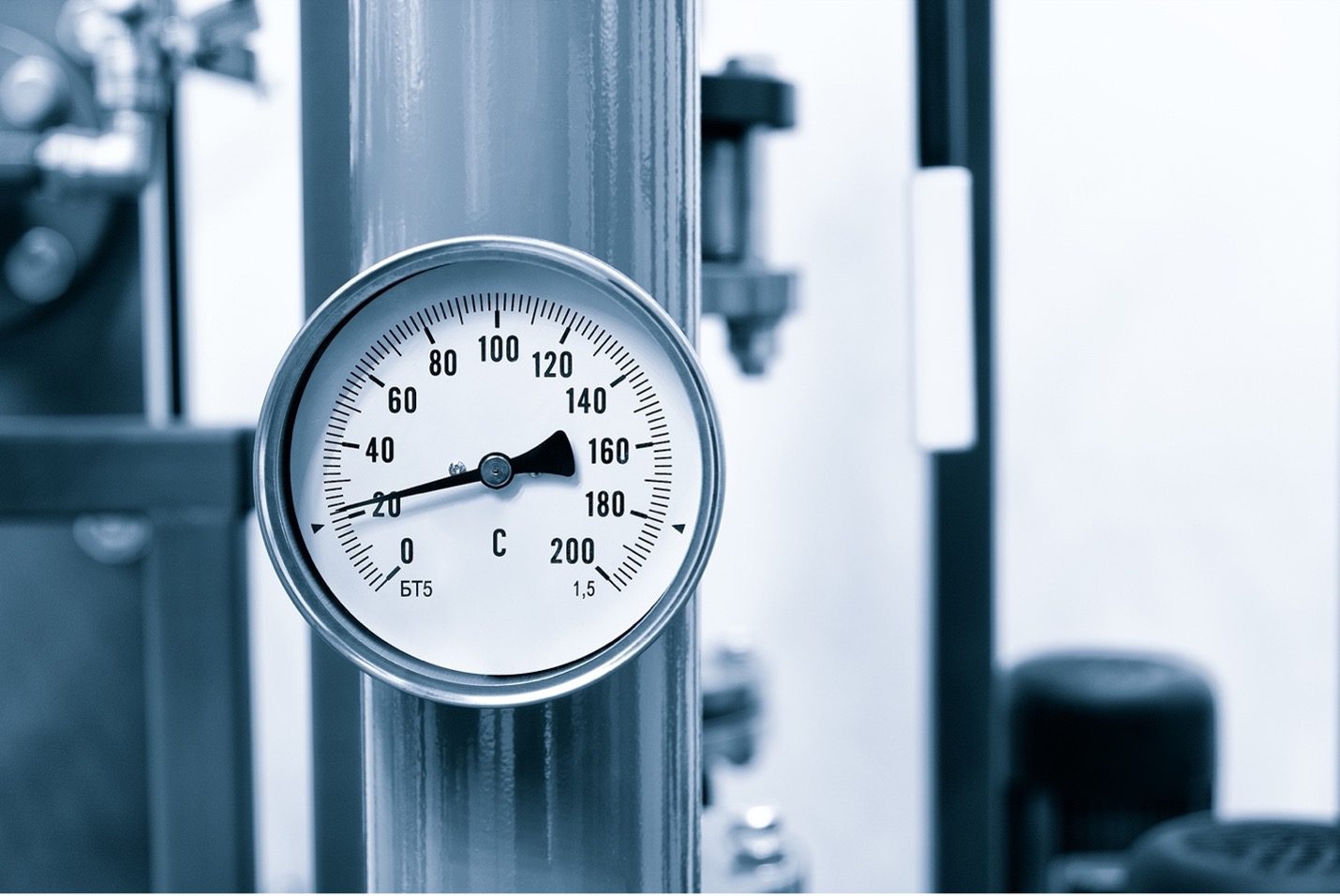
The force a gas or liquid exerts per unit surface area due to the effects of that gas or liquid’s weight from gravity is measured with a precision instrument called a manometer. Manometers can be set up to offer a measurement of a variety of pressure levels depending on the type and how they are set up.
Analog Manometers
How they Work
Analog manometers, which use a fluid contained in a U-shaped tube, use hydrostatic balance. When the ends of the tube are exposed to atmospheric pressure, the fluid inside will settle to the same level at each end. But if you press on one of the U’s legs, the level of liquid will go down there while it goes up in the other. This is because the pressure will push the fluid down in one leg and up in the other, making a column of fluid with a weight equal to or greater than the pressure. Since pressure is measured by the difference in height between the fluid levels in the two halves of the tube, this difference is directly related to the force that is being used.
Types of Analog Manometers
- Simple U-shaped–Also called a Piezometer Tube Manometer, this type of manometer is used to gauge pressure at a specific location.
- Cistern–the cistern variety resembles U-shaped tubes at first glance, but a closer inspection reveals that one of the U’s legs has a significantly larger cross-sectional area than the other. The fluid level in the larger leg shifts less when subjected to pressure, and this allows for a single scale to be read to derive the pressure value, as opposed to two scales in the U-tube design.
- Inclined – The instrument’s sensitivity and resolution are increased because of the design, which permits it to detect changes in pressure despite their modest magnitude
- Absolute – Use only one leg open to atmospheric pressure by sealing off the other end with a rubber or plastic stopper. When mercury is used as a seal, the pressure on the inside is reduced to zero, creating a vacuum.
Digital Manometers
How They Work
These include a pressure transducer, a sensor that takes in data about the pressure around it, and outputs an electric signal whose strength is proportional to or indicative of that pressure’s actual intensity. The elastic component of the transducer deflects when pressure is applied, and this deflection can be recognized and translated into a pressure reading via an electrical parameter.
Advantages over Analog Models.
- Smaller, lighter, and with easy-to-read displays, these devices are portable.
- Can connect to a programmable logic controller or computer (PLC).
- Are not affected by fluid characteristics problems that could affect measurement accuracy.
The advantage of Manometer pressure gauges is that they enable the pressure value to be viewed directly on a dial or digital display, in contrast to sensors, which produce an electrical signal and require connection to a device or control system to make their measurement legible or usable.
Midwest Instrument is an industry leader in manufacturing and designing differential pressure gauges, transmitters, and switches. With over 60 years of experience, you can rest assured that we have all the skills, time, equipment, technology and workforce to get you the best products in the industry. Feel free to contact us to learn how our products can help you today!

